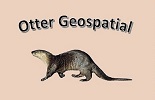A subscription to ArcGIS Online is a large investment for an organization, but it puts a set of powerful tools in the hands of the organization’s members. AGOL has been in steady use by UW-Green Bay staff, faculty and students since 2012. However the number of users has remained relatively small. The purpose of this demo is to get more people to test drive AGOL. We’re convinced that more exposure will result in broader acceptance.
Prepare For the Demo – For a certain number of participants, the demo will be their first exposure to ArcGIS Online. Newbies will need to join an ArcGIS Online organization as named users. This is a multistep process that starts with receiving an invitation from one of the organization’s functional administrators. The candidate responds to the invitation by logging in with temporary credentials, resetting his/her password, logging out, then logging in and out a second time.
The process of creating web map data layers from tables of spatially referenced information is a focus of the demo. That process requires prior knowledge of standard mapping and data tabulation practices. We’ve collected (and in some cases written) articles that can be helpful in this regard:
Latitude and LongitudeGeographic Coordinate System Syntax
.00001 Degrees Is (Usually) Close Enough
Geotagging Basics
Attribute Table Field Names
Create An Empty Web Map – The steps listed assume that the demo participant is starting from scratch other than the fact that he/she is a named user in the AGOL organization.
- Log in to ArcGIS Online using “named user” credentials.
- Find the Content section and create a folder for the web map and it’s associated files
- Create the web map in the content folder. Give the map an informative name and pick a basemap.
- Zoom to the extent that you want visitors to see first.
- Share the web map with Everyone and email the short URL to yourself.
- Save the map, log out of AGOL and test the short URL.
Create and Populate a Data Table – The table is the source of the information that will be displayed in the web map.
- Log on to a networked PC and create a workspace folder on a reliably backed up network drive. At UWGB, we would use our faculty or student “M” drive and name the folder “_ArcGisOnline201904_WebmapDemo”.
- Create an empty data table in the workspace folder by saving a blank Excel worksheet as type “CSV (comma delimited)”. Give the file an informative name.
- Populate the table. This is a ridiculous oversimplification. Expect to spend a fair amount of time fooling around with data formatting and field names.
- Always save and close the data table before trying it out in AGOL
The Doc_URL Field – The field is used to store the home URLs of web accessible documents (JPGs, MOVs, PDFs, etc) that will be opened via the web map (a web accessible document is one that has a home on a trusted, outward facing server).
- Linking a document that is already web accessible to a web map is easy. Just find the document on the web and copy its URL into the table.
- A document that is found to be homeless can be made web accessible in AGOL. It needs to be uploaded to the named users content folder and shared with Everyone. At this point AGOL will give it a URL that can be pasted into the data table.
Add Data To the Web Map – These steps assume that the source table is a csv file that is not currently open for editing and that the target web map exists and is open in the AGOL map viewer.
- Find the source table in Windows File Manager and drag it into the web map.
- Tell AGOL which field contains the latitude values and which the longitudes
- AGOL will have selected a table attribute to use for symbolizing the data. The result is usually pretty lame. The “Location only” option produces the simplest map and is a good place to start.
Optimize the Map’s Appearance and Behavior – How the map looks and behaves is a function of the properties that are set for each layer. There is also some flexibility in the map itself. You will seldom get the exact look and feel that you envision anyway so it’s probably best to focus on a few key adjustments.
- Basemap selection
- Selection and visibility range of additional background layers
- Will popups be used? If so how?
- Will symbology be linked to table values? If so how?
